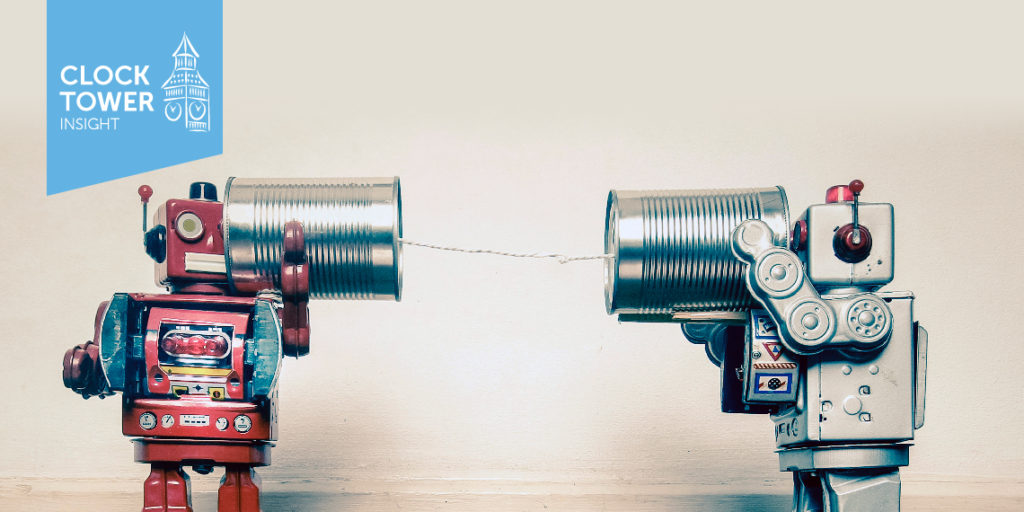With the world moving faster and technology becoming increasingly more prevalent in our lives, companies are seeking ways to cut operational costs. Incorporating time- and staff-saving measures like chatbots is becoming more prevalent among businesses.
What Is Chatbot?
According to Chatbots Magazine, “A chatbot is a computer program powered by AI that allows you to interact with the customers via a chat interface.”
There are two main types of chatbots. One of them functions based on a set of rules. The more advanced version uses machine learning. A chatbot that functions based on rules is very limited because it can only respond to very specific commands – it’s only as smart as it’s programmed to be. But a bot with an artificial brain has the ability to understand language, not just commands. It actually winds up becoming continuously smarter as it learns from the conversations it’s having.
What Can Chatbots Do For Customer Service?
Chatbots can prove a pretty useful tool to help streamline the customer service experience and help to cut operational costs. They can prove useful to:
Automate Online Purchases
Chatbots have the ability to remember your purchasing history and preferences so they can automatically provide you with suggestions. They can even forward your preferred method of payment on to the sales department so you won’t have to repeat it.
Improve Response Rates
When your customer service department is otherwise occupied, chatbots can handle responding to all incoming messages – even the minute, mundane ones – quickly. The high response rate can greatly increase the chances of converting visitors into buyers. In fact, an instructed chatbot can consistently chat for several hours without help from a human, saving you time, money, and energy.
Improve Customer Service
In an age of instant gratification, customers don’t want to have to work very hard or long to get answers. Chatbots are a good option for companies who don’t want their customers to take too long searching for information on their FAQs section or through the website. While you’ll quickly grow tired of answering the same questions over and over again, chatbots won’t complain at all.
Better Customer Communication
Customers want to have attention, and they’re more inclined to be loyal to brands that are able to pay attention to them. Customers like the personalized treatment that chatbots are able to give as they’re individually answering each question as it comes through. A recent study shows that 80% of customer’s queries were able to be resolved by chatbots without human supervision.
IBM estimates that 265 billion customer support tickets and calls are created globally every year, resulting in $1.3 trillion in customer service costs. They also reference a Chatbots Magazine figure purporting that implementing customer service AI solutions, like chatbots, into service workflows can reduce a business’ expenditure on customer service by 30 percent.
Each bot can be created with a specific purpose. For instance, a store can create a bot that will help you to purchase something. At the same time, your cable and internet company may have a bot that can answer your customer support questions. And because chatbots incorporate our current preferred method of communication- messaging- people are already expecting and eager to communicate in this format. In fact, Josh Elman, partner of Greylock believes that “Messaging is where we spend a ton of our time and expect to communicate. It’s ridiculous we still have to call most businesses.”
Limitations of Chatbots
While sophisticated chatbots can be extremely responsive, they’re still limited to what they’re able to do. Since they’re just glorified computer programming, they only have the ability to provide the answers they’ve been taught to say.
Chatbots don’t make room for actual emotion. Humans have a really huge advantage over chatbots, and that’s our innate emotional intelligence. The complex inner-workings of our limbic system have honed the ability to read tone, language and emotion into human speech. Bots may be able to mimic human conversation at a basic level, but they still struggle to truly understand it and its nuances.
For a human, it can be frustrating to deal with a bot who only has a few options to offer on an infinite loop. Humans crave talking with someone that has the ability to empathize with them. They need someone that can read between the lines and words and connect with them on an emotional level.
So far, most bots aren’t at the stage where they’re able to handle complex queries by themselves. They still act as a glorified butler or switchboard operator; graciously redirecting conversations in need of further assistance to the actual human customer service team.
But there’s just something to be said for true human interaction. In the annual Global Consumer Customer Service Report, CGS reports that many customers still prefer human agents to chatbots.
While they may not be here to replace human beings, chatbots are becoming an increasingly more useful tool when it comes to handling customer service and user interaction. They can help us to save money, time, and energy.

